-
Title (Dublin Core)
-
Uncle sam remodels his army
-
Article Title and/or Image Caption (Dublin Core)
-
Uncle sam remodels his army
-
extracted text (Extract Text)
-
BOMBERS rain destruction down on
him out of the high air, and low-
flying hedgehoppers pepper him
with their machine guns. Fire-
belching tanks lurch menacingly
toward him through early-morning battle
field mists. Field guns spray him with dead-
ly shrapnel, and howitzers pulverize his
trenches into gory ruin with high-explosive
shells. In the World War he was drenched
with poisonous gases and—ever a cheerful
pessimist—he fully expects to be drenched
with them again in the future. When he
marches he plods along stubbornly under
a burden of equipment, weapons, and am-
munition which, in its proportion of weight
of load to weight of bearer, is twice the
burden of an army mule. When he fights
on the defensive he keeps his head down and
hopes for the best in a trench which nearly
always is muddy. When he attacks he goes
grimly forward against all the nerve-shat-
tering hellishness of modern war machines
protected by nothing more substantial than
atin hat.
The Britishers call him the poor bloody
infantryman. The French call him the
poilu. We call him the doughboy. He has
won every war—barring push-overs such as
the German-Polish blitzkrieg—which has
been fought since gunpowder began to make
steel-plated knights look silly toward the end of
the Middle Ages. Despite airplanes, gas-engine-
propelled armored fighting vehicles, high ex-
plosives, chemicals—all the products of science
and of human ingenuity which have been pros-
tituted to the uses of destruction—he remains
the king-pin of battle. Because only the foot
soldier can both take ground and hold it, it is the
infantryman that wins the local successes which
make it possible for generals to win the battles
which enable nations to win wars.
Over a century ago Napoleon said: “The in-
fantry is the army.” Today high-ranking Amer-
ican Army officers almost unanimously chorus
“check!” to that observation.
‘The fact that they agree with Napoleon doesn't
‘mean that these officers are 100 years behind the
fast-moving military parade. They have studied
all the new weapons which, a few years ago,
‘many people thought would reduce the infantry-
man to the ignoble role of a mere mopper-up,
and they have experimented with most of them.
They all believe in artillery—plenty of it. They
all believe in airplanes, although they don’t agree
on how aviation should be used in war. They all
believe in motorization—even the tradition-lov-
ing yellow-legs who want to do their fight-
ing ‘on horseback are glad to have their
mounts carried to the scene of action in
trailers. Most of them shrug their shoul-
ders at the prospect of chemical warfare,
and have no qualms about using gas if the
other fellow uses it first. Nearly all of them
believe in mechanization, in greater or less
degree. But with the exception of a few
wing-wearing enthusiasts who are honestly
convinced that air power could win any war
all by itself if it only were given a real
chance, these men who have made a study
of modern war believe that the new weap-
ons that the machine age has given soldiers.
should be used for just one purpose—to help.
the infantry to advance. It still is the dough-
boy that lands the knock-out, they say. It
still is the infantry that is the core and es-
sential substance of the army.
‘When we went into the World War the
organization of our small infantry divisions
had to be changed to meet the demands of
the murderous toe-to-toe slugging match on
the Western Front, where continuous trench
lines from the sea to Switzerland gave no op-
portunity for maneuvering. Fast footwork
‘was sacrificed to develop a hefty punch, and
the infantry division—composed of two two-
regiment brigades of infantry, a three-regi-
ment brigade of artillery, and various aux-
iliarles—was strengthened until in the final
months of fighting its authorized strength
was close to 30,000 men. Those big World
War divisions moved slowly, and keeping
them supplied with ammunition and food
was a job which turned staff officers’ hair
gray, but they could take a lot of punish-
ment, and they packed a mighty wallop.
After the World War another reorganiza-
tion was indicated. What our army needed,
military experts decided, was infantry divi-
sions that were small
enough to move fast and
large enough to hit hard.
Various Staff officers
went to work on the reorganization
problem. One of them was George
Marshall, who at forty-odd still was
a Regular Army captain, although in
France he had worn a colonel’s silver
eagles when as Chief of Operations of
our First Army he had planned the
withdrawal of our troops from the St.
Mihiel battlefield and their transfer to
the new positions from which they
launched the decisive Meuse-Argonne
offensive—a _fourteen-day-long _mili-
tary juggling act which gave the Ger-
man General Staff its most complete
and unpleasant surprise of the war.
Marshall was the original army
streamliner. He started with the in-
fantry squad, and worked up. He was
the father of the new simplified in-
fantry drill regulations which enable
a commander to move his men from
where they are to where he wants
them and get them fighting with a
maximum of speed and a minimum of
frills, and
‘which make it possible for an instructor to
teach recruits all they need to know about
close-order drill in a few hours. The new
regulations remained tentative and experi-
mental for the better part of ten years. They
became official a few days after General
George Marshall was appointed Chief of
Staff last year.
Staff officers continued to sweat over new
tables of organization for the infantry divi-
sion—the basic organization of the Army,
but they were unable to evolve anything
which seemed more efficient than the old
World War “square” division. By pruning
the muster rolls of the regiments they re-
duced the division's peace strength to 13,500
and its war strength to 21,500. Efforts to
make it still smaller in the interest of in-
creased mobility were blocked by the then
unanswerable contention of experienced of-
ficers that further reduction would result in
a fatal loss of fire power—that the fighting
value of an infantry division shouldn't be
measured by how fast it can move, but by
how many men it can put on its firing line.
It was, oddly, a civilian that provided the
answer to the soldiers’ argument and who
made the Army's new “streamline” division
practicable. His name is John C. Garand,
and he is an employee of the Government
armory in Springfield, Mass. The answer he
provided is a gas-operated semiautomatic
rifle which is believed to be the best mili-
tary shoulder weapon in the world.
Assuming that 100 men armed with the
Garand can produce a volume of fire equal
to that of 250 men armed with any rifle
used by the infantry of any other army, the
General Staff ordered the organization of
five “streamline” divisions which can hit
hard as well as move fast.
There are no brigades in the new division,
which is known officially as the “triangular
division.” It is composed of three regiments
of infantry, two regiments of field artillery,
a division headquarters and military-police
company, an engineer battalion, a quarter-
master battalion, a medical battalion, and a
signal company. With the additional medi-
cal personnel attached to its various organi-
zations, its authorized peace strength is
8,953 officers and men, but as 390 are in-
active in peace, its actual peace strength is
427 officers, three warrant officers, and 8,133
enlisted men—a total of 8,563. Its war
strength is about 12,000. Its 1,257 motor
vehicles—trucks, tractors, field cars, trail-
ers, motor cycles, and motor-cycle side cars
—can transport or tow all its artillery,
heavy weapons, and equipment, and also
carry a considerable number of its men.
Certainly its fleet of motor vehicles will in-
crease its marching rate considerably above
the twelve and a half miles a day which was
normal for the foot-slogging, mule-drawn
World War division.
The streamline division's three infantry
regiments are the backbone of its fighting
power. Each of them has an actual peace
strength of 1,964 officers and men, and a war
strength of about 2,400. At war strength
each regiment would have 1500 Garand
rifles in its firing line.
The organization of the infantry regi-
ment is triangular. It has three battalions.
Each battalion has three rifle companies and
a heavy-weapons company armed with six-
teen .30 caliber machine guns, two .50 cali
ber machine guns, and two Sl-millimeter
mortars—smoothbore, curved-fire weapons
which can lob a 71%-pound fin-type projectile
two miles. Each rifle company has a head-
quarters platoon armed with three 60-milli-
meter mortars—light mortars which fire
a 3.3-pound projectile to a maximum range
of about a mile with remarkable accuracy
—and three rifle platoons. Each rifle pla-
toon is composed of three rifle squads of
eight men each at peace strength and of
twelve men each at war strength. All the
members of the rifle squads are armed with
the Garand—or will be as soon as enough
Garands are available. The 15%-pound au-
tomatic rifles which were distributed one to
a squad under the old infantry organization
are out. So are rifie grenades.
For protection against tank attacks,
the regimental headquarters company is
equipped with six of the new 37-millimeter
cannon which are capable of thirty shots a
minute and whose two-pound shells will
“kill” any light or medium tank at 1,500
yards. Weighing only 900 pounds, and
mounted on pneumatic-tired carriages, they
are easily handled by an eight-man squad.
One of the new division's completely mo-
torized artillery regiments has thirty-six
75-millimeter guns which, modernized, have
a range of almost eight miles. The other
regiment has sixteen 155-millimeter how-
itzers.
Our new infantry division is the smallest
of any in the world's armies. The war
strength of the French division is about 14,-
000, of the German division about 15,000, of
the Italian division about 17,000, and of the
British division about 19,000. But our stream-
line division's 4,500 Garand rifles give it
greater fire power than that of any of the
European infantry divisions. And it is fire
power, not the number of men used to pro-
duce fire power, which is the real measure
of an infantry division's strength.
-
Contributor (Dublin Core)
-
Arthur Grahame (article writer)
-
Language (Dublin Core)
-
eng
-
Date Issued (Dublin Core)
-
1940-07
-
pages (Bibliographic Ontology)
-
82-85,218-219
-
Rights (Dublin Core)
-
Public domain
-
Archived by (Dublin Core)
-
Sami Akbiyik
-
Marco Bortolami (editor)
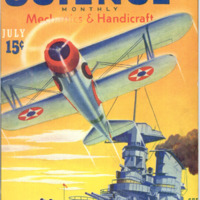 Popular Science Monthly, v. 137, n. 1, 1940
Popular Science Monthly, v. 137, n. 1, 1940
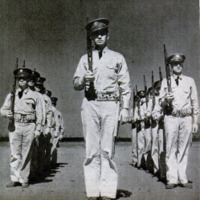 Ekran Resmi 2022-01-18 14.06.24.png
Ekran Resmi 2022-01-18 14.06.24.png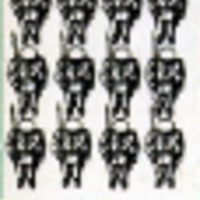 Ekran Resmi 2022-01-18 14.06.08.png
Ekran Resmi 2022-01-18 14.06.08.png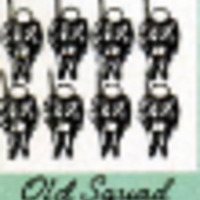 Ekran Resmi 2022-01-18 14.06.17.png
Ekran Resmi 2022-01-18 14.06.17.png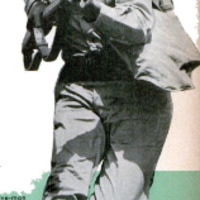 Ekran Resmi 2022-01-18 14.06.31.png
Ekran Resmi 2022-01-18 14.06.31.png Ekran Resmi 2022-01-18 14.06.40.png
Ekran Resmi 2022-01-18 14.06.40.png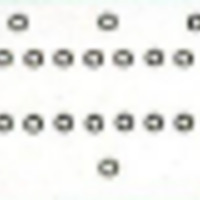 Ekran Resmi 2022-01-18 14.06.46.png
Ekran Resmi 2022-01-18 14.06.46.png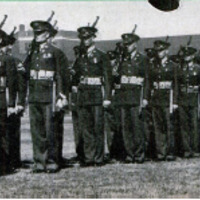 Ekran Resmi 2022-01-18 14.06.51.png
Ekran Resmi 2022-01-18 14.06.51.png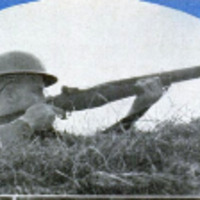 Ekran Resmi 2022-01-18 14.06.58.png
Ekran Resmi 2022-01-18 14.06.58.png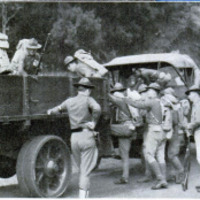 Ekran Resmi 2022-01-18 14.07.03.png
Ekran Resmi 2022-01-18 14.07.03.png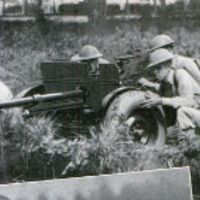 Ekran Resmi 2022-01-18 14.07.20.png
Ekran Resmi 2022-01-18 14.07.20.png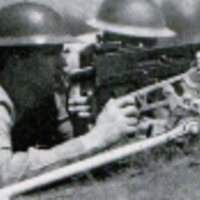 Ekran Resmi 2022-01-18 14.07.24.png
Ekran Resmi 2022-01-18 14.07.24.png Ekran Resmi 2022-01-18 14.07.31.png
Ekran Resmi 2022-01-18 14.07.31.png











